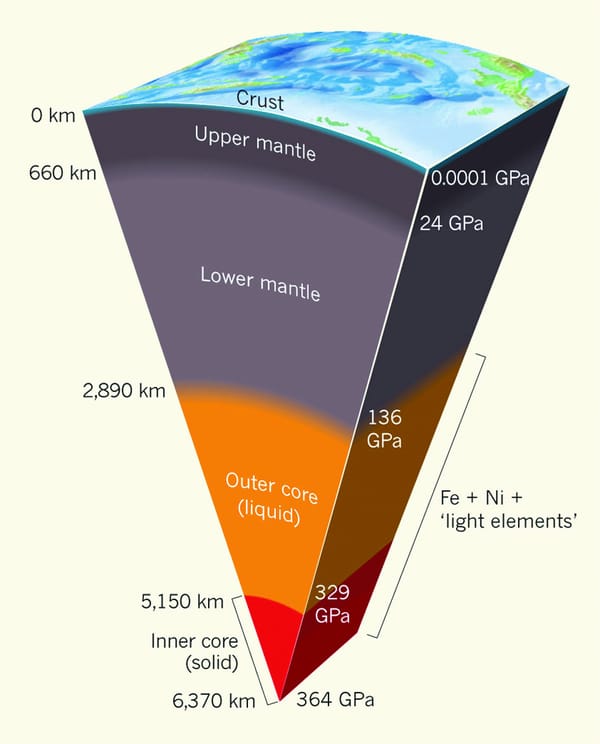Let it snow, let it snow...
Science Editors Alexander Karapetian and Kelly Oakes bring you an inside look into snowflakes

Snowflakes start out life as small particles of dust in a high up cloud. Water freezes around the dust particles, forming tiny ice crystals. At first, the ice crystals grow slowly, developing flat sides known as facets. At this stage they are hexagonal prisms, with eight sides or facets – two shaped like hexagons and six that join the two hexagons together to make the prism. All facets grow at equal rates and, for a while, the ice crystals slowly get bigger. Once they reach a certain size, branches sprout from the six corners of the crystals. The branches grow at the same rate to begin with, because the atmospheric conditions are the same all around the crystals.
But once the weather starts to get better and a crystal is blown around in its cloud, the surrounding temperature changes randomly. Crystal growth rate is linked to temperature so the branches start to grow more erratically. All sides of the crystal experience the same conditions at the same time, so they grow at the same rate - but that rate changes with the constantly changing temperature, resulting in the beautifully complex structure we call a snowflake. Each snowflake looks slightly different thanks to its unique growing conditions, but has six-fold symmetry because of its early life as a hexagonal prism.
At least, that’s what a snowflake looks like in theory. In practice, two branches do not always grow at exactly the same rate even if they both exist in exactly the same conditions. So not all snowflakes have perfect six-fold symmetry – but they come pretty close.
Technically, an ice crystal in the shape of a hexagonal prism is a snowflake. It would not be difficult to find two of these small snowflakes that looks essentially identical. Once they get larger and more complex, however, you would be looking for an increasingly long time – possibly forever – to find two the same.
What an individual snowflake looks like depends on a fine balance between two processes: faceting and branching. Faceting is the formation of flat sides and branching is the formation of, you guessed it, branches. These processes are both affected by temperature and other atmospheric conditions. Once a snowflake leaves the hexagonal prism phase of its growth and starts branching, especially under changing atmospheric conditions, it diverges from the simple hexagonal shape and becomes complex rather quickly.
An individual snowflake is the result of so many ‘choices’ – which way to branch, how fast to grow – that the chances that two of these complex snowflakes will be the same is very small. If only a hundred choices were made in the formation of a snowflake, there would be 10158 possible different resulting snowflakes. That’s seventy orders of magnitude more than the number of atoms in the universe. In reality, there are many more choices made, and many more paths the snowflake could have gone down in its formation – resulting in an almost unimaginable number of possible snowflakes.
Putting aside the complex branching that goes on, the stuff that snowflakes are made of can also be the source of much variation. Snowflakes are typically made up of around 1018 water molecules. All water molecules are not created equal: most will be exactly the same, but in one in five thousand a deuterium atom will have replaced one of the hydrogen atoms, and in one in five hundred, a slightly heavier isotope of oxygen will replace the usual oxygen atom. The probability that two snowflakes have these molecules laid out in the same way is very, very small.
The shape of snowflakes has been familiar to many of us from a young age, instilled in our minds by media ranging from cartoon depictions to weather reports. Their symmetry has been a research topic for some time; Olaus Magnus, a Swedish writer, published one of the earliest snowflake diagrams in 1555. Researchers, philosophers and the curious eventually began to know more, with René Descartes publishing a study for the crystallization process in 1637. Just under thirty years later snow crystals were observed under magnification, in what was to become the first major publication of the Royal Society of London by Robert Hooke. His book, Micrographia, inspired a wave of interest in bringing the world of the small to our eyes by way of microscopes, and further research catalogued the various types of crystals involved in forming snowflakes.
By the 1900s, we had 97 types of snowflakes, and had studied the relationship between temperature and water vapour saturation. Japanese physicist Ukichiro Nakaya, who famously said that “snowflakes are letters sent from heaven”, looked into how snow crystals naturally form various patterns, with his Nakaya Diagram outlining relationships among vapour, temperature, supersaturation and excess vapour density in clouds. Nakaya created over 3000 photographic plates of the various shapes and was driven to create artificial snow from ice crystals grown in his laboratory. His technique of using a cooled dual-layer hollow glass tube failed to create snowflakes. He did, however, manage to produce a snow crystal on the tip of a single hair of rabbit fur – three years after his first attempt.
In 1983, snow crystals were made in orbit on the Challenger Space Shuttle while testing biological materials in electrical fields under microgravity. The Nakaya diagram was confirmed shortly after, with artificial snow crystals made in an updraft. Now, scientists can create artificial snow at will, with a deep understanding of the environmental and chemical processes involved.
The shape of snow crystals has also been intriguing to mathematicians. The Koch snowflake, named after Swedish mathematician Helge von Koch, was one of the earliest fractals to be described. It consists of equilateral triangles drawn on to segments of an existing triangle repetitively. Adding triangles to every side of the previous state is one iteration. The Koch snowflake is what you end up with as the number of iterations tends to infinity.
Considering the fractal as a mathematical curve, it would be continuous across the real numbers but differentiable nowhere, similar to the curious Weierstrass function that holds the same properties. These functions challenged the once-believed idea that every continuous function was differentiable except on a set of isolated points. They, like fractals, exhibit self-similarity; a zoom anywhere on the curve would look exactly the same as the bigger picture.
Fractals such as the Koch snowflake tend to have simple rules for generation but often result in complex plots after few iterations. A mathematician called Felix Hausdorff introduced a means of better understanding how fractals fill space in 1918, called the Hausdorff dimension. It was used in cases where the space was better described with non-integer values, as opposed to those in classical topological dimensions. The Sierpinski triangle, a famous fractal, consists of three copies of itself after each iteration, with each copy shrunk by a factor of a half. The Hausdorff dimension provides a more intuitive means of describing the space taken up by each iteration by taking into account a ratio of the natural logarithms of the amount of copies created and their respective scale factors.
A Sierpinski hexagon, or Hexaflake, is built with the presence of a Koch snowflake at all zoom levels, and is a generalisation of the traditional shape used, allowing snowflake-like fractals to be generated from arbitrary polygons tessellated recursively. The Hexaflake has a larger Hausdorff dimension than the Koch snowflake, with features including the replacement of each flake with smaller polygons on each iteration. Several fractals have been classified successfully according to this method of calculating the space they use, but some have no analytical solution as yet.
Snowflakes have always been a symbol representative of the festive season, and Felix Science is keeping its fingers crossed for a white Christmas.








